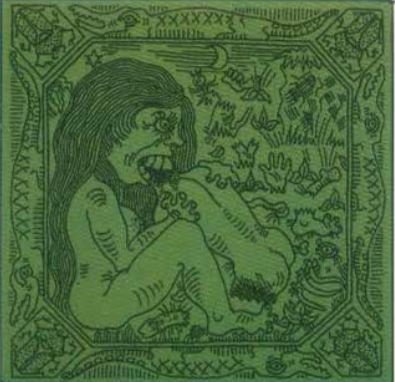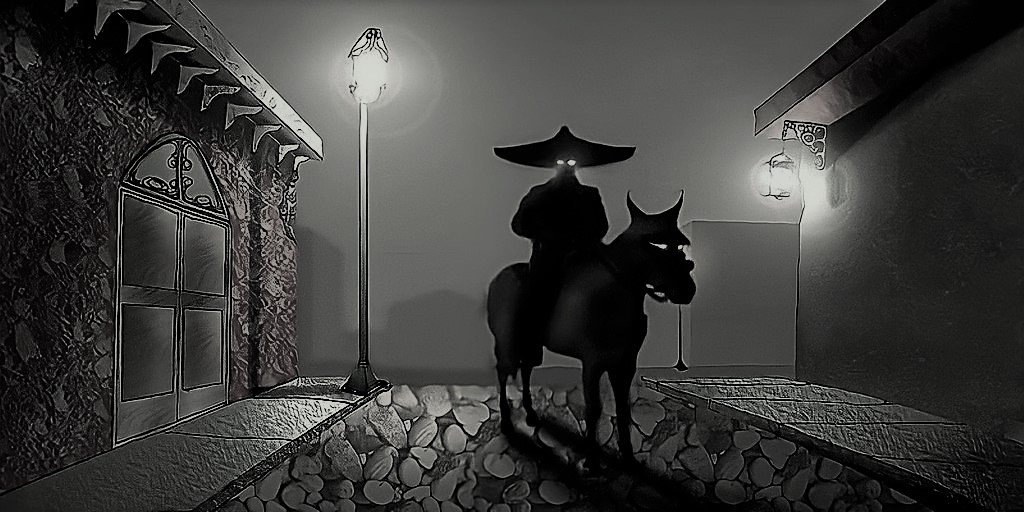The Origin of Cinco De Mayo
On May 5th, Cinco de Mayo celebrations take place in the United States and Mexico with many believing it’s a celebration of Mexico’s independence. I, myself, was one of those people until I learned that Mexico’s independence day is actually September 16th.
So what the hell are we celebrating on Cinco de Mayo and how did it get so popular?
This pic has nothing to do with Cinco De Mayo, I just wanted everyone to see what stock photos think an appropriate amount of limes for four tacos are…
Some people might assume that it was marketing and capitalism that helped create Cinco de Mayo and turn it into a full-scale beer party. This started around the 1980s and today, beer sales in the U.S on Cinco de Mayo rival that of Super Bowl Sunday, so that marketing was pretty effective.
But while that might have helped spread it’s awareness there were actually small celebrations in the U.S long before 1980, so it must have some greater meaning otherwise it would be like Canada celebrating the Battle of Saratoga every year.
If you’re Canadian and you’re asking “what is the Battle of Saratoga?” then you’ve proven my point. Turns out Cinco de Mayo might have actually, accidentally, been a key turning point in the United States Civil War. History is crazy.
At The Door of War
Let’s start this chapter of history in 1860, the United States was at the precipice of a civil war and Mexico was nearing the end of its civil war, The War of Reform. After Mexico’s independence in 1821 from Spain following an 11-year war, Mexico saw various attempts at a governing body. None of which seemed to be working.
The group in power in 1855 wanted to strip the church and military from their power but the opposing group was against it. Some even proposed a monarchy following only one leader and disregarding any other leaders who were better suited to lead…
Anyone feel deja-vu right now?
Foolishly this led to the storming of the capitol, wait no, civil war. That led to civil war. And after 3 years, in 1860 the war ended with those wanting to limit the church and military power coming out victorious.
In 1861 President Benito Juarez was elected and Mexico looked ahead… except the war had crippled their economy and some opposing factions were still carrying out attacks. Benito Juarez, having no other choice, issued a moratorium suspending payments to foreign debt, including Great Britain, France, and Spain.
Meanwhile, just a bit up north, the southern states of the United States feared newly elected president Abraham Lincoln would outlaw slavery despite his inaugural speech stating he wouldn’t.
These southern states began to succeed and attempted to create the Confederate States of America. They believed having control of cotton, which was over 60% of U.S exports would force Great Britain, France, and Russia to recognize the Confederacy as legitimate.
Hint: It did not.
Napoleon Knocks
But even if those countries wanted to recognize the Confederacy, they had more important things to deal with, specifically, Mexico’s lack of payment. Spain, Great Britain, and France signed a tripartite agreement to join forces and head to Mexico to get their money.
By the way, France at this time was being led by Napoleon the third, nephew of that Napoleon, you know the one who wanted to create a French empire? And his nephew was trying to follow in his uncle’s footsteps.
See the goal of the tripartite agreement was to send over each country's Navy and negotiate a payment plan with Mexico. They did this by ‘occupying’ the port city of Veracruz, Mexico, in January of 1862 and then marching toward the president.
Seems a little aggressive, but okay.
“Heading to a friendly conversation”
Britain and Spain successfully negotiated a payment plan but France and Napoleon were demanding more. This reaction caused the tripartite agreement to fall apart in April of 1862, leaving France on their own. Napoleon’s real plan was to take over and set up a puppet state in Mexico. It’s theorized he was then planning on recognizing and helping the confederacy in the American Civil War, which was now in full effect.
By this time, the confederates plan of controlling the cotton didn’t work out since Union troops took control of the ports, this meant no one got cotton. Britain had a backlog of cotton allowing them to get by, France, on the other hand, needed the cotton and this likely gave Napoleon incentive to want to help the Southern States.
Risking World War
France encouraged Britain to join them in recognizing the Confederacy but President Lincoln had threatened that recognizing the confederacy as the Confederate States of America would be tantamount to a declaration of war.
For Britain, a war with the United States would mean a loss of a quarter of their food imports plus, they had already outlawed slavery themselves. Supporting or even recognizing the confederacy as legitimate would only be a bad look for them, not to mention risking Canadian interference in supporting the Union.
And as for the rest of the world? Russia was supporting the Union, they sent ships during the winter of 1862 to stand by in the sea just in case France and Britain decided to join the Confederacy. Austria was prepared to help France in their quest to overtake Mexico and, in turn, hoped for a confederacy win.
The Ottoman Empire, yea they were still around, had a trade deal with the Union and actively banned Confederate ships. Japan attempted to use the U.S. Civil War as a distraction and attempted to take back the port lands that the U.S controlled.
President Lincoln quickly put a stop to that by sending the USS Wyoming and engaging in a battle where the Wyoming sunk two Japanese ships while suffering comparatively light casualties. Basically, the world was at the precipice of a World War and everyone was just waiting to see who would push first.
Napoleon Sends the Troops
For France going into the war alone against the United States would be foolish. France’s only real chance was to take over Mexico quickly with the help of Mexican forces that opposed the newly elected President Benito Juarez.
After that victory, they would assist the confederacy before the war was over. A quick French victory against the war-exhausted Mexican troops was largely expected by the rest of the world.
In April of 1862, Napoleon sent between six thousand and seven thousand troops under the command of General Charles de Lorencez, an experienced and highly trained general.
President Juarez, on the other hand, sent General Ignacio Zaragoza, a veteran of the Mexican Civil War with no formal military training, to lead a little more than half of the forces that Lorencez had. On top of that, the French forces were much better equipped and better trained than anyone Zaragoza led. This was evident by the immediate retreat at Acultzingo on April 28th during a battle with the French troops.
Cinco de Mayo in Puebla
Zaragoza retreated to the heavily fortified city of Puebla. Lorencez followed behind believing the city was full of Mexicans who supported the French, but Zaragoza had prepared for that, prior to the battle he sent troops ahead to clear out French supporters.
On May 5th, 1862 Lorencez launched three assaults on Puebla, underestimating the strengths of the forts and the Mexican forces. In the first assault, Lorencez used much of his artillery thinking it would topple the forts; he was wrong.
On the second assault, he sent a diversionary attack but they were easily beaten back.
By the third assault, Lorencez was out of artillery fire and launched an infantry attack but couldn’t penetrate Zaragoza’s forces. Zaragoza realized Lorencez was out of artillery and sent cavalry to attack from the left while other troops went around the other side to flank the French troops.
Victory
Lorencez has no choice but to withdraw. Almost a thousand of his men were either dead, injured, or captured while Zaragoza lost only a quarter of that. The battle was over, and Mexico had won.
It was a widely inspirational battle for the Mexican army. There were celebrations all along Mexico and even in California and Nevada. Puebla City was renamed Puebla de Zaragoza although he wouldn’t live to see it. General Ignacio Zaragoza contracted typhoid fever four months later and died at the age of 33.
Napoleon’s Return
Napoleon regrouped, relieving General Lorencez of his duty, and sent more troops to Mexico a year later on May 17, 1863. This time the French troops were victorious and proceeded to Mexico City, taking it for their own.
Napoleon had taken Mexico. He named Austrian Archduke Maximillian the new Emperor of Mexico on April 10th, 1864. But by the time Napoleon succeeded in creating the puppet state, union troops in the American Civil War were on their way to sure victory having won the Battle of Gettysburg and triumphed at the Siege of Vicksburg the year before.
Only a year later the confederates would surrender and the United States of America would stay intact. In 1866, Napoleon pulled his troops from Mexico, and with the help of the United States, Benito Juarez took back Mexico from Emperor Maximillian in 1867.
He was executed.
History is full of little moments in time that could have changed the trajectory of the entire world even if it doesn’t appear so at the time. Who knows what a French victory in 1862 would have caused, what domino would have tipped over?
Would the union forces have lost to a French-aided Confederacy? Would a world war have started decades sooner?
There’s no way of knowing, but what we know for sure, is that a 33-year-old General Zaragoza and his ragtag army, exhausted from fighting, amidst a divided political landscape, faced a highly trained army twice their size on Cinco de Mayo in 1862 and, changed the world.
That is why Cinco de Mayo should be celebrated.














